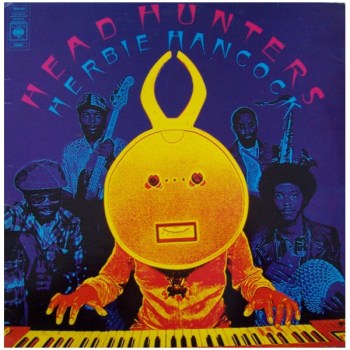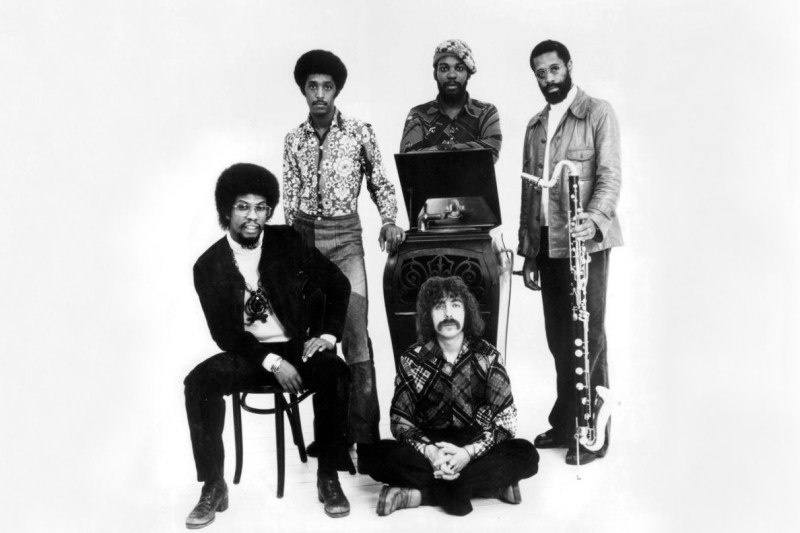The first time I heard Head Hunters in its entirety was in my sophomore year of college as part of a jazz history course. The concept of listening to a record from start to finish, without discussion, and getting credit in the process was intriguing enough. It was well before eight o’clock in the morning and the album still shredded my mind. I’ve been listening to it ever since and, like any good artistic composition, Head Hunters delivers something new with each and every spin.
Released in late 1973, the album was the 12th studio effort from the already established Hancock. The Chicago-born musician has just wrapped up a trio of albums (often called his “Mwandishi” era) that were especially improv-driven. He was looking to reground himself in music, leaving the spacier jazz sounds he’d become famous for in favor of something more grounded; primal even.

For context, this was the busy musical era of guitar gods and folk smiths. Of R&B powerhouses like Marvin Gaye and funk legends like Stevie Wonder and Sly & the Family Stone. Jazz was becoming even more far out, thanks to new effects and instrumentation as well as a collective mental desire to escape. After all, Nixon was showing obvious signs of villainy and a seemingly endless war in Vietnam waged on.
In San Francisco, Hancock assembled a supremely talented sextet for the album, bringing in several new faces. He elected to largely replace the guitar with the clavinet and plugged in a talented rhythm section. Hancock commands the synth keys throughout, taking the record’s four dynamic songs to places where entire concept albums of ten-plus tracks rarely ever go. The dialogue of his keys is articulate and on-point, from beginning to end. If a stage-owning lead vocalist ever assumed the shape and sound of an electric piano, this would be it.
The opening track, “Chameleon,” sports one of the chewiest bass lines out there. It’s one of many colossal hooks on the record, combining to form a vital theme — that heady jazz can be presented to the masses, dripping with countless entry points. That hook forms the spine of a tremendous, groove-filled song that by the five-minute mark is already outdoing itself with dazzling improv and subtle key changes. Fixed to a funky core riff but farsighted in its sonic meandering, the first half of the track is like an enchanting wild animal on a leash plenty long enough to get a good sprint in.
The second half of the track is lounge gold, with twinkling keys, restless percussion, and rich symphonic elements. The groove is still there, but it’s vaporized. The core groove has goes fluid, wading in smooth jazz, funk, and little hits of classically minded experimental chamber music, only to reappear just before the end of the track to remind you of its utter dominance.
“Watermelon Man” opens with a jug band-esque line that’s since become legendary. Bandmate Bill Simmers blows into a beer bottle, looking to imitate traditional sounds from Zaire (pygmy music in particular). Pay attention to the density of the rhythm section when it drops, the playfulness of Hancock’s keys, and the many horns that nonchalantly waft in and out of the track. The instrumentation has been likened to the percussive nature of an African drum circle, where each individual plays his own distinct part. And like the opening song, the track is bookended by an incredibly intoxicating groove.
Then, the album audibly exhales. The track “Sly” is dedicated to the man himself, fitting as Hancock goes funky and guitar-like with many of his interjections. A soulful brass section pulses along to drummer Harvey Mason’s lightning-fast hands. At times, it sounds like a funk-rock anthem traveling at hyper speed. Per the album’s theme, there’s innovation in exploratory solos but it’s all grounded to an extremely rhythmic base. The band sounds off, flexing their individual chops via speedy phrases.
The album finishes with “Vein Melter,” a tension-filled number that flirts with both order and disorder. There’s the refined, military-minded drum shuffle, set beside Hancock’s fluttering keys. There’s a cinematic quality to the waves of background sound, often led by a bass clarinet. If there were a Fantasia vignette set in an open-air cafe on some desert plain, this would be the soundtrack. Soon, it simply stops breathing, with a few last beats of percussion to indicate the end.
Head Hunters would go on to be sampled by everybody from Beck and Madonna to George Michael, Coolio, and more. It’s the first jazz album to go Platinum and it’s recognized by the Library of Congress via the National Recording Registry for its many cultural merits. And it is widely and deservedly hailed as a watermark moment in the innovative realm of jazz fusion, something Hancock practically defined.
Give it a spin and get lost for 42 minutes.



